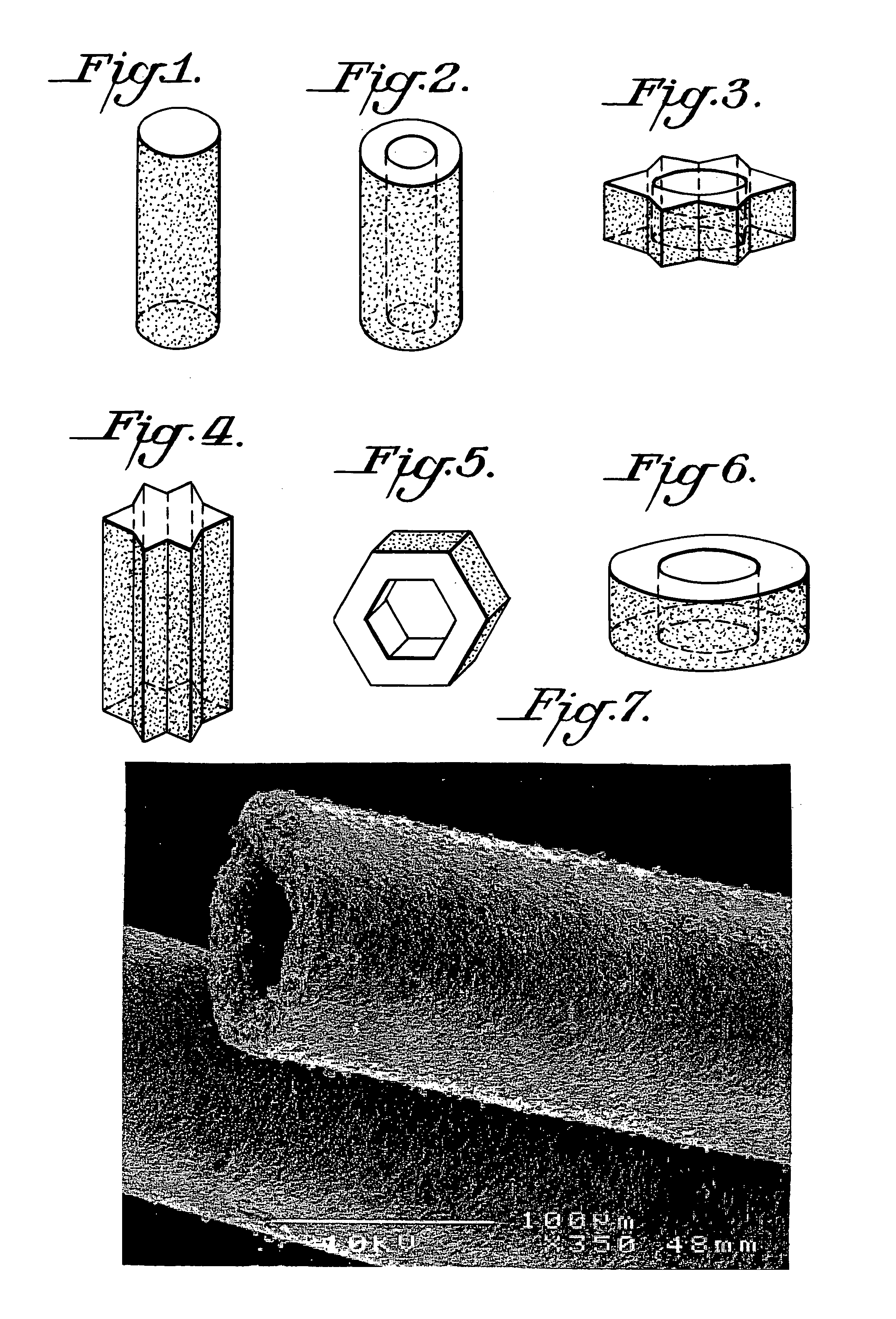Microcrystalline alpha-Al2O3 shaped body, method for the production and use thereof
a technology of al2o3 and microcrystalline crystalline crystalline bodies, which is applied in the direction of ceramic shaping apparatus, pigmentation treatment, application, etc., can solve the problems of low yield of grains with a specific grain shape within a defined grain size, and low production efficiency of grains
- Summary
- Abstract
- Description
- Claims
- Application Information
AI Technical Summary
Benefits of technology
Problems solved by technology
Method used
Image
Examples
example 1
[0059]An α-aluminum oxide with a maximum particle size d99 of approximately 1 μm and a median particle size d50 of approximately 0.5 μm that was obtained from a coarser α-Al2O3 powder through wet grinding and subsequent spray drying was mixed with methyl cellulose, polyethylene glycol, oleic acid and glycerin as binder additives and water as a solvent and turned into an extrudable mass with a kneader and subsequently extruded in a piston extruder at a median pressure of 150 bar. The mouthpiece of the extruder consisted of a punched disk with a hole diameter of approximately 1.3 mm.
[0060]The extruded billets were cut to the desired length of the shaped body with a rotating blade located immediately after the outlet opening. Sintering of the green bodies was carried out in a sliding-bat furnace at 1,480° C. in the presence of air. The sintering time was approximately 1 hour. The sintered, microcrystalline shaped bodies obtained in this fashion possessed a hardness HV0.2 of 19 GPa, a m...
example 2
[0062]The production of the shaped bodies occurred analogously to Example 1. In lieu of the oleic acid, ammonium polyacrylate was used as a binder component. Sintering was carried at 1,475° C. out in a revolving tubular kiln instead of a sliding-bat kiln. The sintering time amounted to approximately 30 minutes. Crushing of the extruded material occurred in a cutting mill without any interim steps.
[0063]The sintered, microcrystalline shaped bodies obtained in this fashion possessed a hardness HV0.2 of 20.2 GPa, a median crystallite size of 0.5 μm, and the density reached 98.6% of the theoretical density.
example 3
[0064]The production of the shaped bodies occurred analogously to Example 1.
[0065]After sintering, the rod-shaped bodies resulting from the production process were carefully mixed with a mixture of water glass, glass powder and iron oxide pigment until the surface was equipped with a uniform coating of the pigment. Subsequently the abrasive grain coated in this fashion was fired at 900° C. in a revolving tubular kiln in order to solidify the binding of the pigment on the surface of the abrasive grain rod.
PUM
| Property | Measurement | Unit |
|---|---|---|
| median particle size d50 | aaaaa | aaaaa |
| particle size d99 | aaaaa | aaaaa |
| temperature | aaaaa | aaaaa |
Abstract
Description
Claims
Application Information
 Login to View More
Login to View More - R&D
- Intellectual Property
- Life Sciences
- Materials
- Tech Scout
- Unparalleled Data Quality
- Higher Quality Content
- 60% Fewer Hallucinations
Browse by: Latest US Patents, China's latest patents, Technical Efficacy Thesaurus, Application Domain, Technology Topic, Popular Technical Reports.
© 2025 PatSnap. All rights reserved.Legal|Privacy policy|Modern Slavery Act Transparency Statement|Sitemap|About US| Contact US: help@patsnap.com

